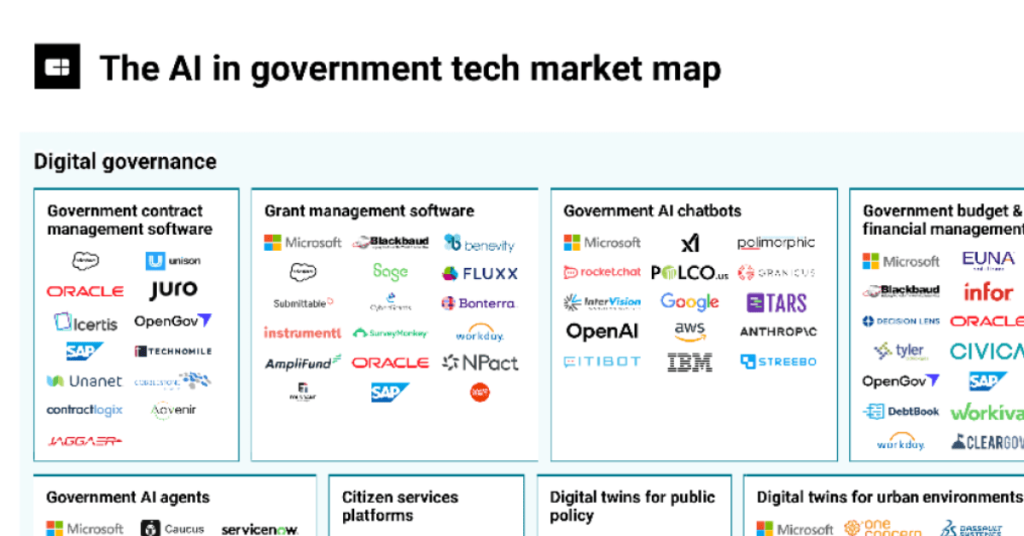Government operations are rapidly embracing automation and AI solutions, driven by the increasing pressure to deliver more efficient public services while managing budget constraints and rising citizen expectations for digital-first interactions.
Half of US federal agencies already report high levels of AI adoption, with these systems projected to handle most routine government functions within the next decade. Similar adoption patterns are emerging across municipal governments and international government bodies, particularly in Europe and the Asia-Pacific region.
Generative AI has already transformed procurement and fleet management through automated contract analysis and vehicle optimization, with major partnerships formed between government agencies and providers like Microsoft, Palantir, and specialized govtech firms.
Emerging AI technologies are also gaining traction. Agentic AI is starting to enable autonomous capabilities across public transit management systems and emergency response, while physical AI is advancing robotics across areas from maintenance to security.
In the coming decade, we expect government leaders to increasingly leverage connected AI networks that orchestrate operations across agencies, delivering more integrated and responsive public services.
This market map identifies 317 companies building AI solutions across 32 govtech categories, providing a comprehensive view of the vendor landscape to identify potential technology partners and solution providers across different maturity stages. Companies are organized into the following categories:
Digital governance: Manages core administrative functions and citizen interactions through digital platforms, including digital twins, citizen services, and financial management systems for contracts, grants, and budgets.
Public safety: Enhances law enforcement and emergency response capabilities through AI-powered surveillance, detection, and prediction technologies, including automated recognition systems, crime forecasting, evidence management, and robotic security solutions.
Transportation and mobility: Optimizes the movement of people, vehicles, and goods, including parking management, fleet tracking and dispatch, traffic flow management, and public transit coordination.
Autonomous equipment: Automates municipal maintenance and public works operations using physical AI to reduce labor costs and improve service consistency in areas such as snow removal, street cleaning, landscaping, and heavy equipment tasks.


